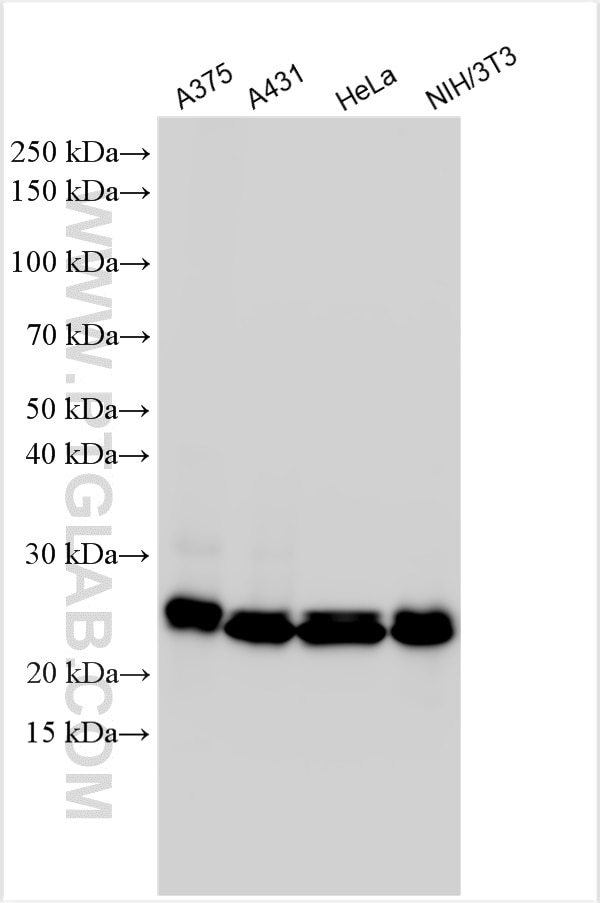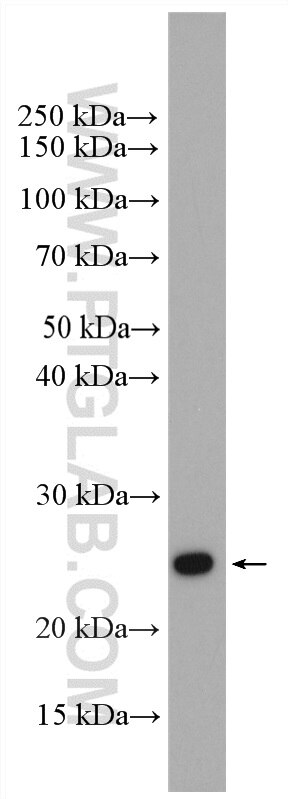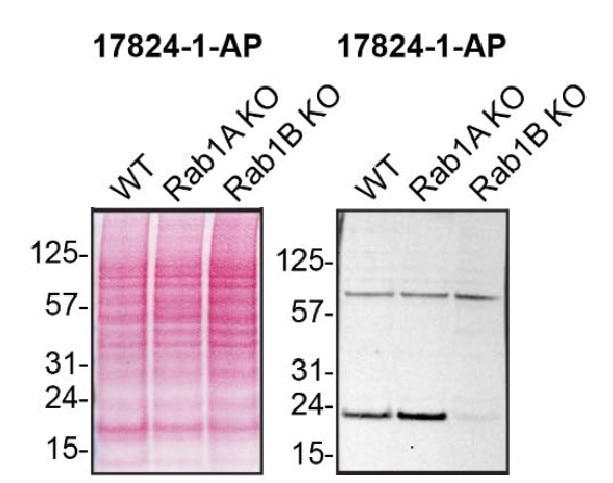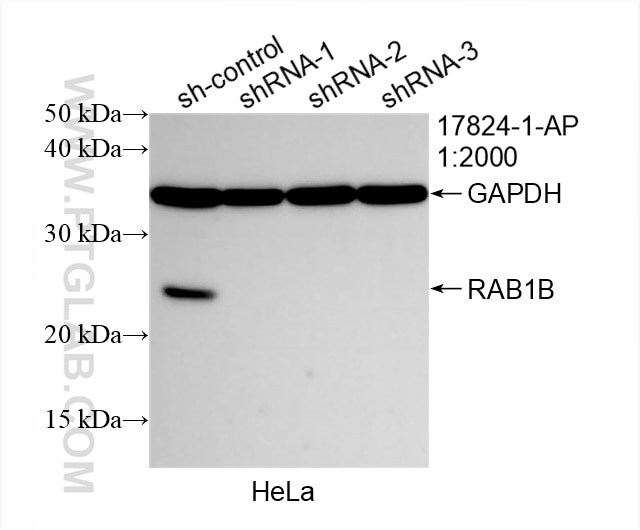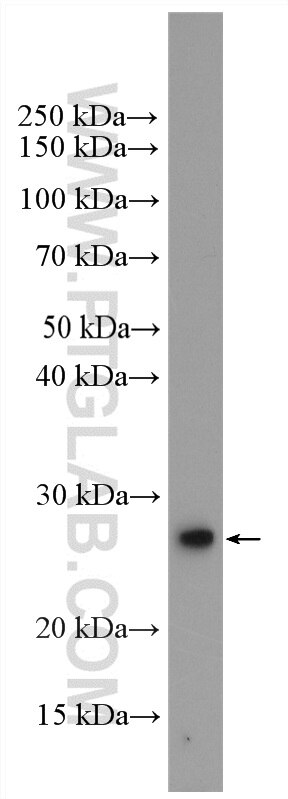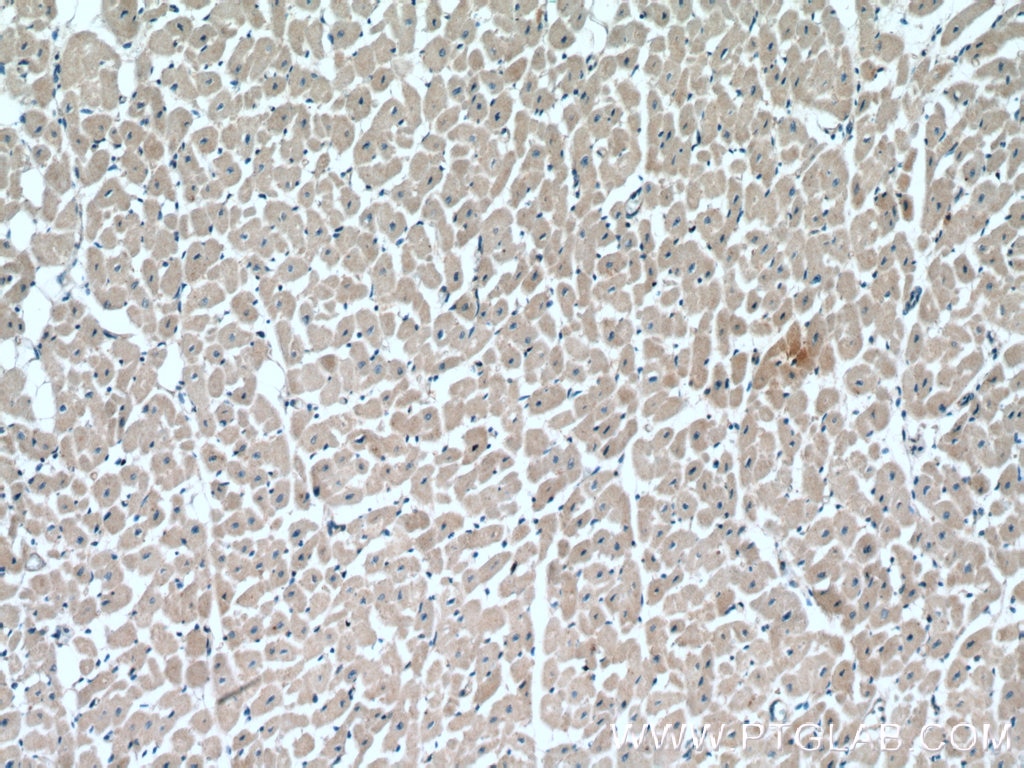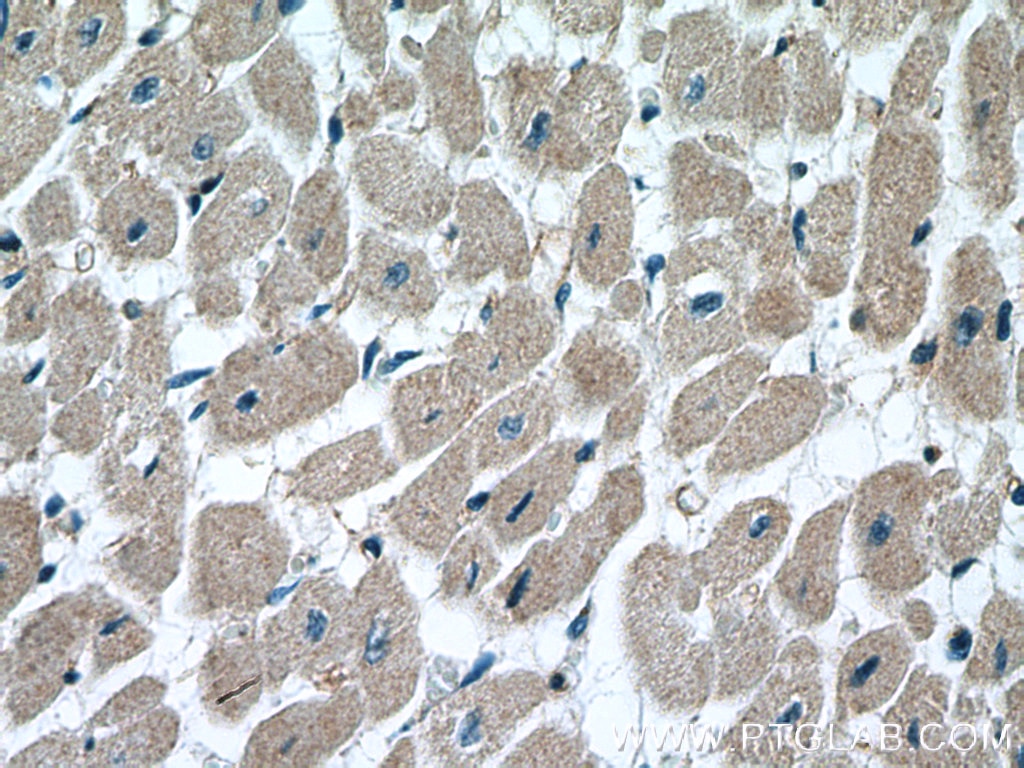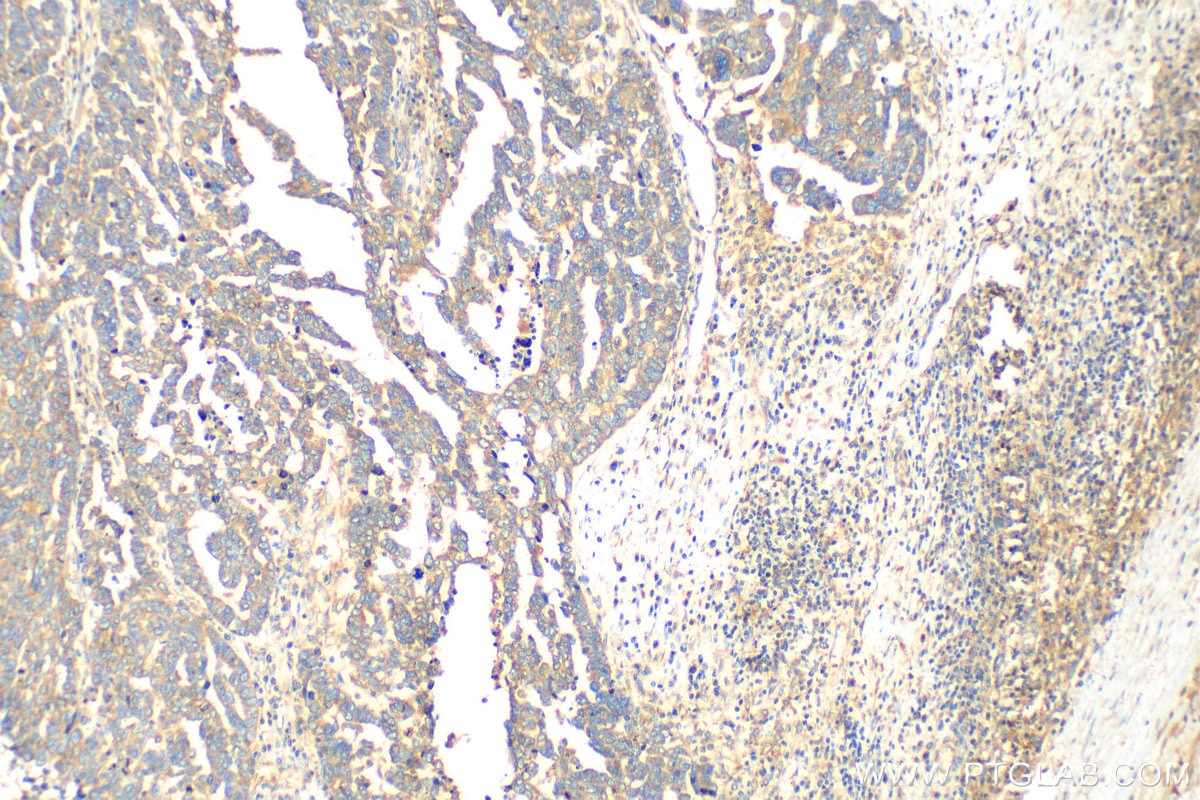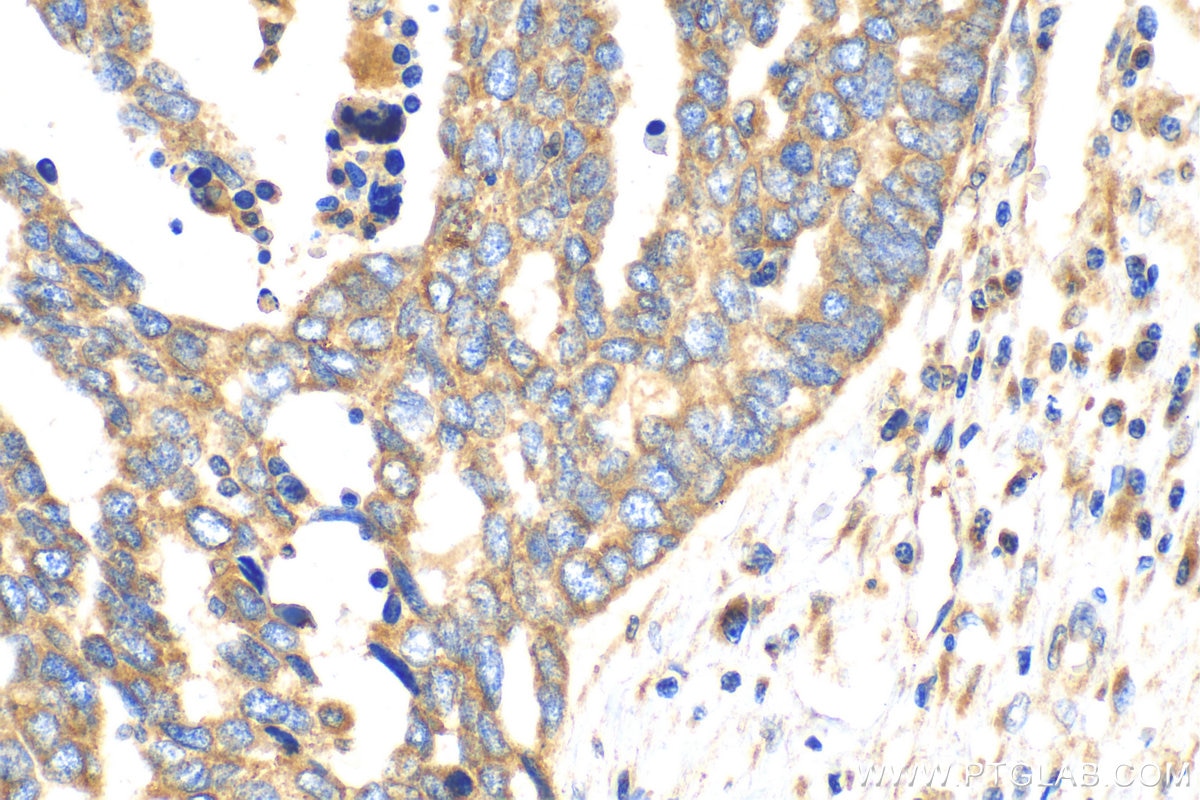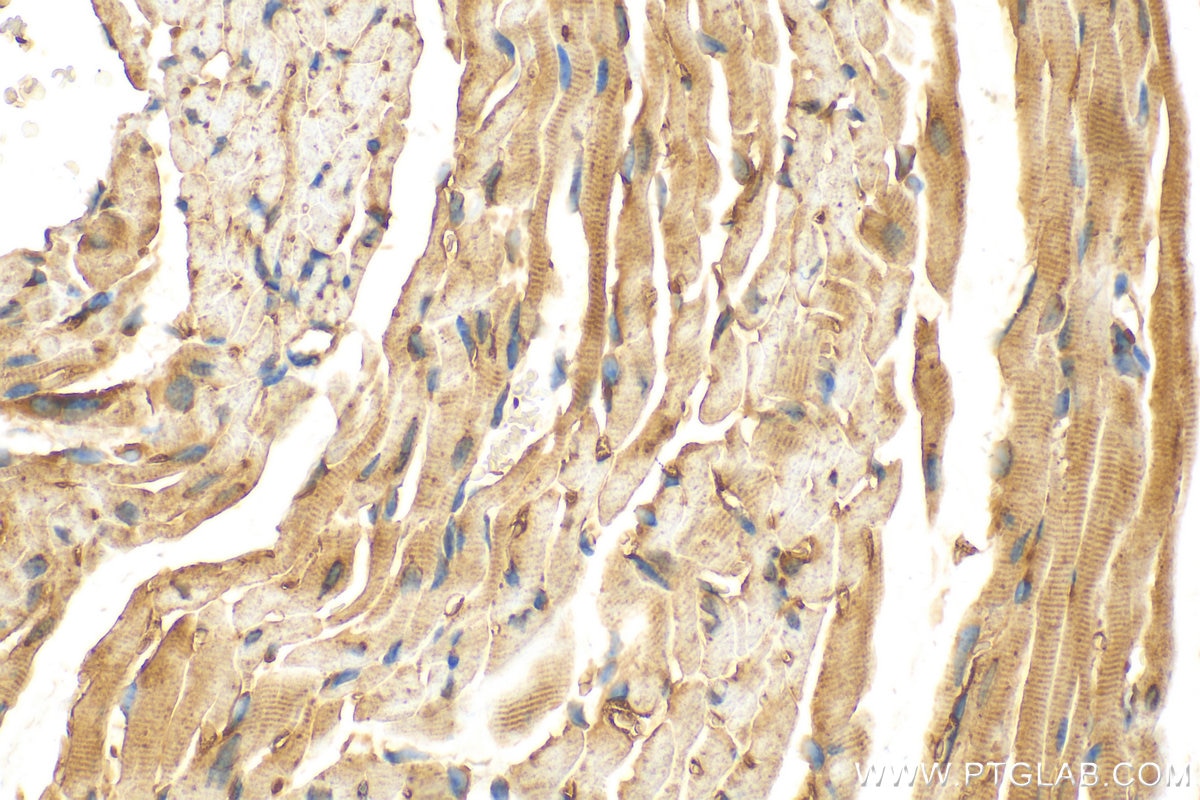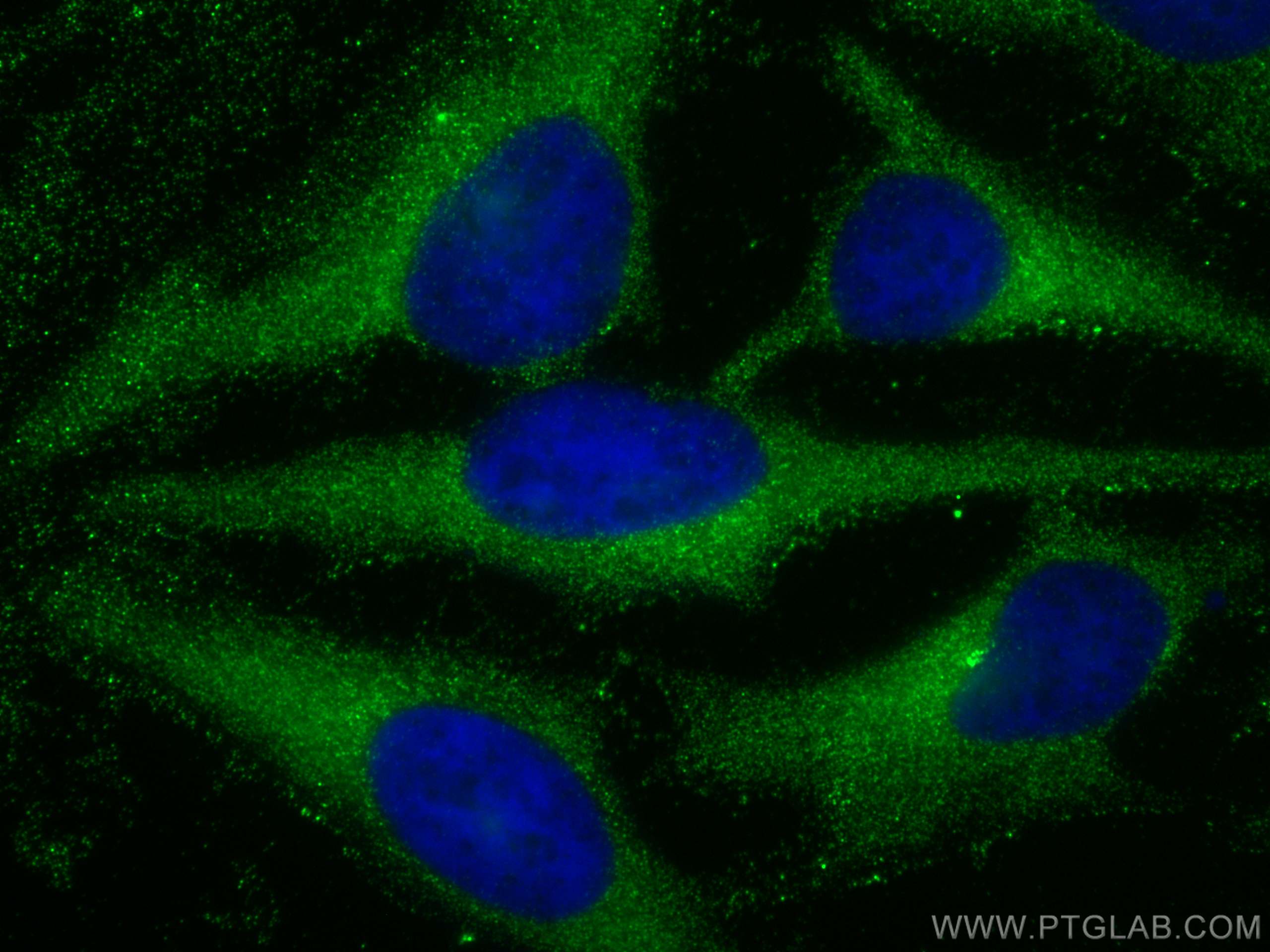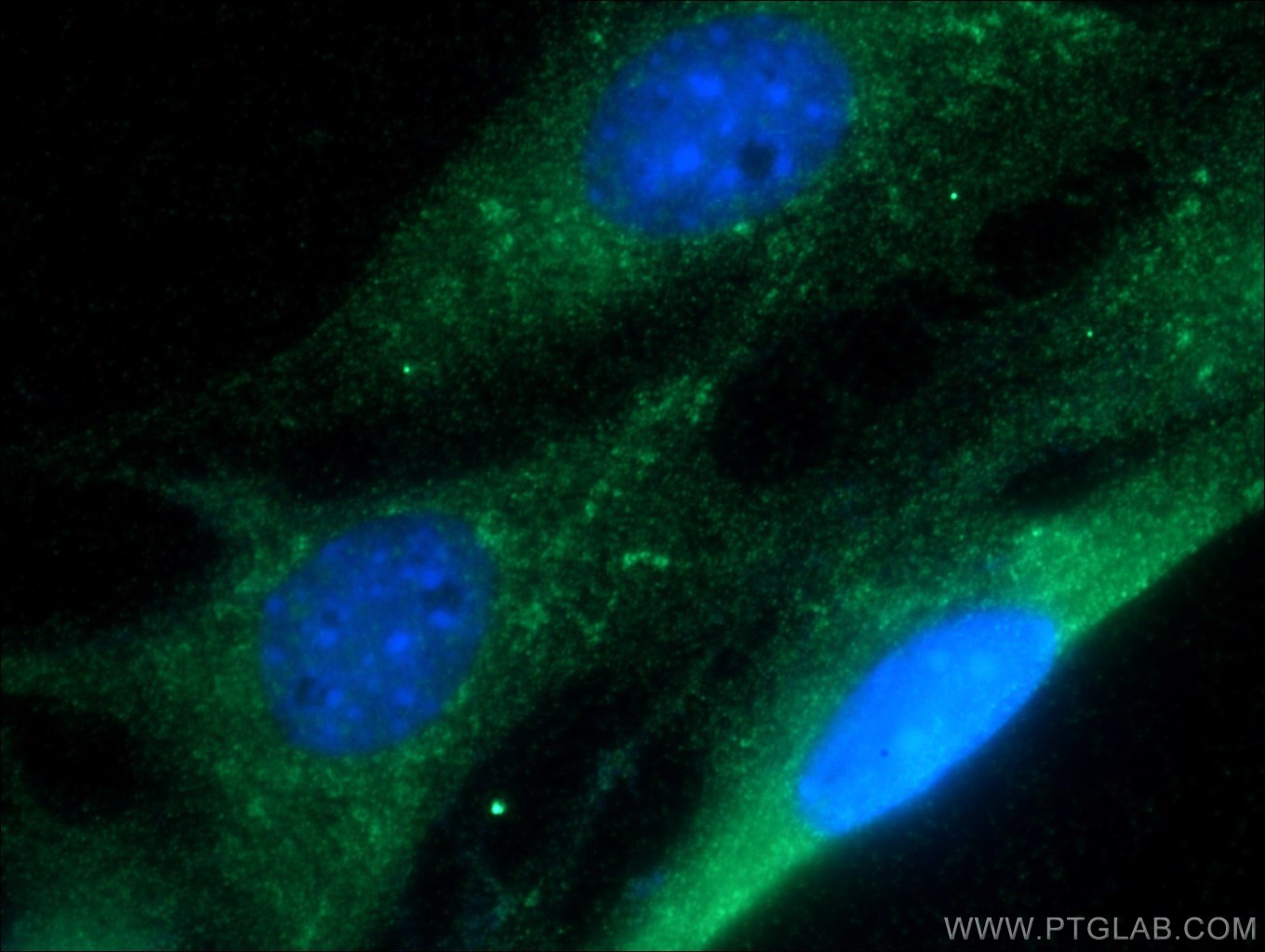- Phare
- Validé par KD/KO
Anticorps Polyclonal de lapin anti-RAB1B
RAB1B Polyclonal Antibody for WB, IHC, IF/ICC, ELISA
Hôte / Isotype
Lapin / IgG
Réactivité testée
Humain, souris et plus (2)
Applications
WB, IHC, IF/ICC, IP, CoIP, ELISA
Conjugaison
Non conjugué
N° de cat : 17824-1-AP
Synonymes
Galerie de données de validation
Applications testées
| Résultats positifs en WB | cellules A375, cellules A431, cellules HeLa, cellules NIH/3T3 |
| Résultats positifs en IHC | tissu cardiaque humain, tissu cardiaque de souris, tissu de tumeur ovarienne humain il est suggéré de démasquer l'antigène avec un tampon de TE buffer pH 9.0; (*) À défaut, 'le démasquage de l'antigène peut être 'effectué avec un tampon citrate pH 6,0. |
| Résultats positifs en IF/ICC | cellules HeLa, cellules NIH/3T3 |
Dilution recommandée
| Application | Dilution |
|---|---|
| Western Blot (WB) | WB : 1:1000-1:6000 |
| Immunohistochimie (IHC) | IHC : 1:50-1:500 |
| Immunofluorescence (IF)/ICC | IF/ICC : 1:200-1:800 |
| It is recommended that this reagent should be titrated in each testing system to obtain optimal results. | |
| Sample-dependent, check data in validation data gallery | |
Applications publiées
| KD/KO | See 3 publications below |
| WB | See 12 publications below |
| IHC | See 1 publications below |
| IF | See 4 publications below |
| IP | See 1 publications below |
| CoIP | See 1 publications below |
Informations sur le produit
17824-1-AP cible RAB1B dans les applications de WB, IHC, IF/ICC, IP, CoIP, ELISA et montre une réactivité avec des échantillons Humain, souris
| Réactivité | Humain, souris |
| Réactivité citée | rat, Humain, porc, souris |
| Hôte / Isotype | Lapin / IgG |
| Clonalité | Polyclonal |
| Type | Anticorps |
| Immunogène | RAB1B Protéine recombinante Ag12197 |
| Nom complet | RAB1B, member RAS oncogene family |
| Masse moléculaire calculée | 201 aa, 22 kDa |
| Poids moléculaire observé | 22-25 kDa |
| Numéro d’acquisition GenBank | BC071169 |
| Symbole du gène | RAB1B |
| Identification du gène (NCBI) | 81876 |
| Conjugaison | Non conjugué |
| Forme | Liquide |
| Méthode de purification | Purification par affinité contre l'antigène |
| Tampon de stockage | PBS avec azoture de sodium à 0,02 % et glycérol à 50 % pH 7,3 |
| Conditions de stockage | Stocker à -20°C. Stable pendant un an après l'expédition. L'aliquotage n'est pas nécessaire pour le stockage à -20oC Les 20ul contiennent 0,1% de BSA. |
Informations générales
Ras-related protein Rab-1B (RAB1B) belongs to the small GTPase superfamily and Rab family. Rab1b, a GTPase regulating secretory transport, was recently associated with targeting proteins to LDs in a Drosophila RNAi screen. Rab1b recruits lipid-synthesizing enzymes, facilitating Lipid droplets (LDs) growth. The small GTPase Rab1b interacts with diacylglycerol acyltransferase 2 to facilitate its targeting to the surface of lipid droplets (PMID: 38809969). Rab1b, an extensively studied and established master regulator of ER-to-Golgi transport. The mechanism of Rab1b's function is to promote ER to LD surface targeting of those triglyceride-synthesizing enzymes that can associate with the unique lipid monolayer comprising the LD surface (PMID: 38809969). Rab1b is a regulatory protein involved in both COPI and COPII transport (PMID: 17429068).
Protocole
| Product Specific Protocols | |
|---|---|
| WB protocol for RAB1B antibody 17824-1-AP | Download protocol |
| IHC protocol for RAB1B antibody 17824-1-AP | Download protocol |
| IF protocol for RAB1B antibody 17824-1-AP | Download protocol |
| Standard Protocols | |
|---|---|
| Click here to view our Standard Protocols |
Publications
| Species | Application | Title |
|---|---|---|
Nat Cell Biol A CREB3-ARF4 signalling pathway mediates the response to Golgi stress and susceptibility to pathogens. | ||
Aging (Albany NY) Overexpression of Rab1B and MMP9 predicts poor survival and good response to chemotherapy in patients with colorectal cancer. | ||
Front Pharmacol Fuyuan Xingnao Decoction Promotes Angiogenesis Through the Rab1/AT1R Pathway in Diabetes Mellitus Complicated With Cerebral Infarction. | ||
Oncol Rep Upregulation and hypomethylation of lncRNA AFAP1‑AS1 predicts a poor prognosis and promotes the migration and invasion of cervical cancer. |
